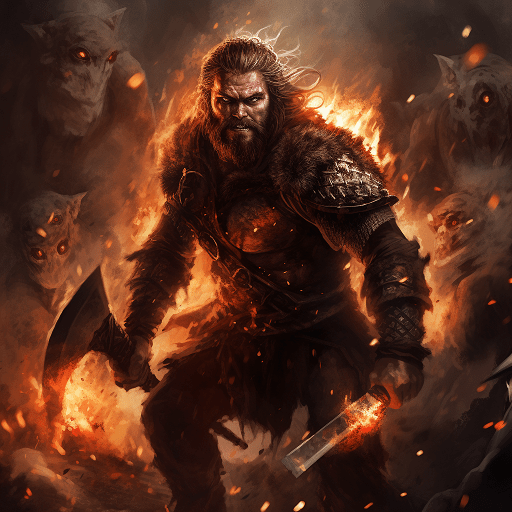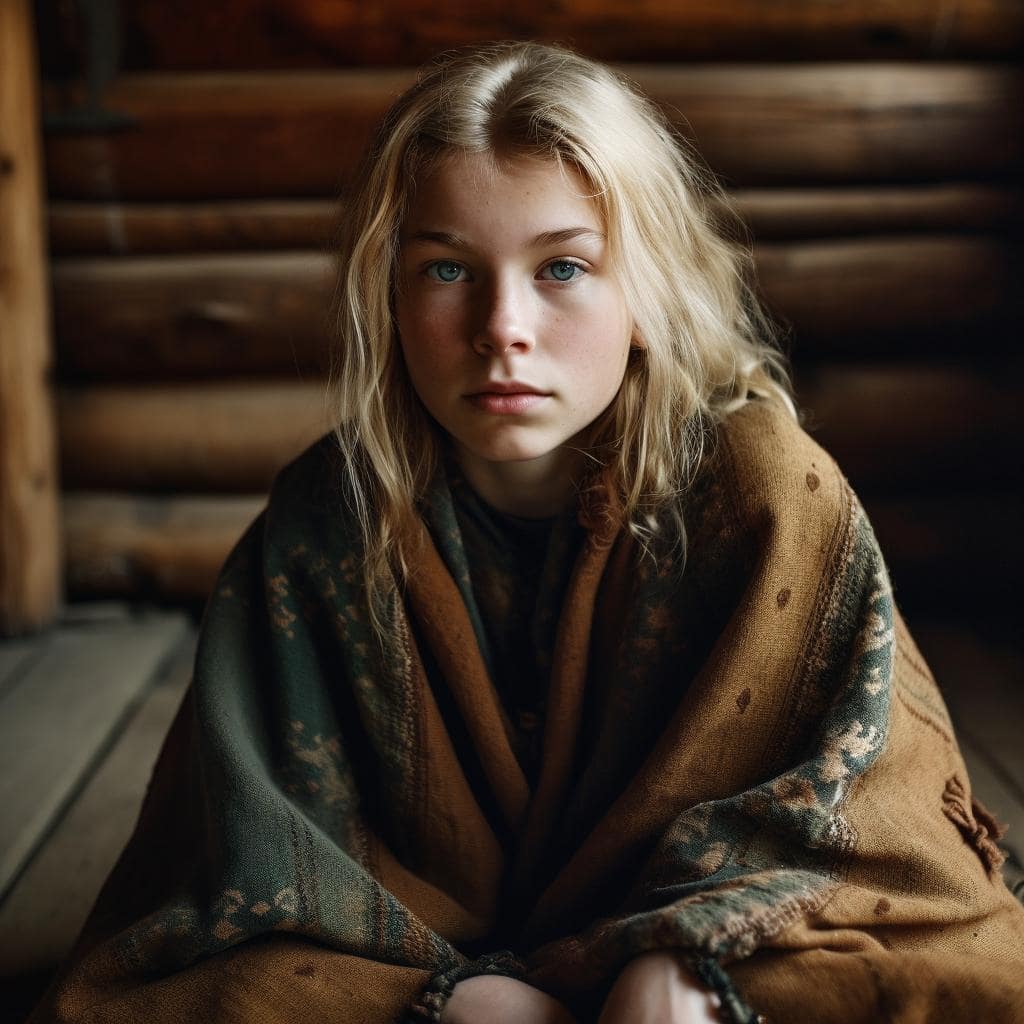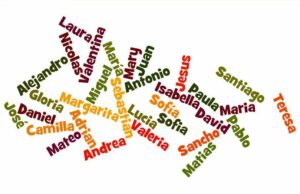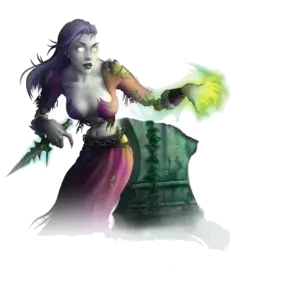
Echoes of the North: Delving into the Nordic Names
The Nordic People are the predecessors of the North Germanic-speaking inhabitants of the Scandinavian Peninsula, who dwelled in the region dating back to prehistoric times 14,000 years ago. When we hear the term “Nordic” we most likely think about stories of the famous Norse raiders or Viking raiders. But there is much more to the Nordic people than the rampant raids and battles. They have a huge impact on the development and history of most of Europe during the Middle Ages—including the spread of the North Germanic language and their Nordic names.
In this article, you’ll get to know more about the significance of the early history of the Nordic people and how they became significant players in the history of Europe. Get to know some of the famous Nordic Names including their phonetic traits (pronunciations) and meaning. Lastly, discover some of the common Nordic female names and Nordic boy names, as well as a few Nordic Last Names. Tyr! Let’s move forward and delve into the world of Nordic Names!
How Nordic People Carved Their Names to Europe
The early dwellers of the Nordic people survive through foraging and hunting during ancient times. It was around 6000 years ago when another group of migrants coming from Anatolia and ancient Syria began to venture northwest and reached the Scandinavian peninsula. These people became the first farmers of the area, bringing with them knowledge and tools for farming. Because of territorial disputes, these migrants are in constant battle with the older Nordic inhabitants.
The earliest proof of the start of flourishing tribes in Scandinavia was during the so-called Nordic Bronze Age. It is by this age where Nordic people learned to trade their local resources with various kinds of metals from mainland Europe. Because of this trade, the Nordic people became skilled in metallurgy. It is also in this age that shipbuilding and seafaring became rampant among the Scandinavians.
The Nordic Bronze Age is said to be the father of all the Germanic people. Because of their skill in metalworks and seafaring, they started to explore more away from the peninsula, and eventually, they were known as the early Germanic people of southern Scandinavia. However, during Classical Antiquity, or the classical era, Central and Eastern Europe experienced a series of conflicts and wars. The conflicting wars from the Persians, Assyrians, Macedonians, Greeks, and Carthaginians disrupted trade between the Scandinavians and mainland Europe. This forced them to become self-reliant, discovering other sources of iron in their area to sustain their metallurgy needs.
Around 400 CE of the Iron Age, large groups of Germanic tribes started to migrate Southward and Eastward from the Scandinavian region. These Nordic people eventually settled on these lands and started to permanently reside in Celtic territories, resulting in a mixture of cultural influence between the Celts and the Nords. Different Germanic tribes started to emerge in these areas such as the Franks, the Goths, the Alemanni, the Huns, and the Alans. It became a problem to the Roman Empire, which are rapidly expanding northward from mainland Rome, thus resulting in the series of wars of the Romans against the Germanic tribes.
And the rest is history! As we know, in the following years of contact with the Romans, many Germanic kingdoms rise in Europe, occupying the former lands of the Roman Empire. It was until the year 700 AD that where re-emergence of the Nordic people from Scandinavia started to plague the surrounding villages of the now Middle-Aged Europe—the Vikings. All of these events were triggered by the vast migration of the Nordic people beginning in the Iron Age. With them, comes the old Nordic languages eventually being passed down to succeeding generations. Nordic influence and Nordic names still exist and were inherited by us in modern times.
The Rich Heritage of Nordic Names
The commonality of the entire Nordic region is their use of a specific and common Nordic language. Because they understand each other, the entire Scandinavian region became solidly culturally related. The Nordic language is also called the North Germanic Language, since it is spoken exclusively in the northern parts of Europe, and is a distant cousin to the derived West Germanic languages (English, Dutch, French) and East Germanic Languages (Vandal, Burgundian, Crimean). Because of the spread-out influence of the Germanic language, as a whole, many words and phonetics were directly derived or borrowed from the Nordic language.
Nordic names have a huge commonality among the Old Germanic tribes and are based on the Old Norse language. These names are mostly related to nature, mythological beliefs, and other cultural influences. With the great migration of the Germanic people in different parts of Europe, they bring with them Nordic languages and Nordic names that were passed down to many generations of the future Germanic kingdoms. Additionally, the rise of the Viking Norsemen spread further influences, especially in the Northwestern parts of Europe. Different Nordic names of Jarls started to emerge and gained renown, spreading political influence among the Christian rulers of England, Ireland, France, and the Holy Roman Empire.
In the late 10th century, Christianity eventually entered the Nordic region and was also used to suppress the unending raids of the Viking pirates. The Church accepted and incorporated some Nordic names and terms into the Catholic culture to encourage Nordic people to convert to Christianity. Nordic mythology names were used to name official days of the week, such as Thor (Thursday –Thor’s Day), Tyr or Tiw (Tuesday – Tyr’s Day), Wodnesdaeg (Wednesday – Odin’s Day), and Frigedaeg (Friday – Frigga’s Day).
The Nordic language is also an integral source of many words from the English language. A few examples are Gunn (gun), rannsaka (ransack), slatra (slaughter), Lan (loan), and Kasta (cast). Nordic language and names indeed left quite a heritage to the world today.

Nordic Names: Themes, Meanings, and Phonetic Traits
Nordic names were created and picked with a unique thought in it. Many Nordic names are only comprised of a single word but can have a phrase or term when it comes to its meaning. The most common theme in creating Nordic names is basing them on nature. Names that are based on trees, animals, and landscapes are commonly used as Nordic names. Below are a few examples.
Nordic Names Based on Nature Theme
- Eira (snow)
- Bjorn (bear)
- Ebbe (wild boar)
- Linnea (linden tree)
- Elfr (river)
Another Nordic name theme is based on Norse mythology. The names they give to their gods and goddesses can be used to create name derivations. Below are examples of Nordic names based on Norse mythology.
Nordic Names Based on Norse Mythology
- Hilda – from the name of the Valkyrie legend, Hildr.
- Astrid – translates as “beautiful” and has a close resemblance with the Norse goddess Astrilde.
- Atlas – based on the water goddess Atla.
- Emma – resembles the goddess Embla.
- Bill – cane from the name Bil which means “inquisitive”.
Prestigious status or standing in life, relative titles or nobility, and occupation are also common themes in creating Nordic names. Checkout some examples below:
Nordic Names Based on Status in Life
- Erik – is from the name Eirikr which means “ruler”.
- Sven – “young warrior”
- Ragnar – “warrior” or “judgment”
- Ivar – “archer” or “bowman”
- Odger – “wealth” and “spear”
Lastly, some Nordic names are based on descriptions, adjectives, or personal qualities of a person. Below are some examples:
Nordic Names Based on Qualities
- Astrid – “beautiful”
- Frida – “peace”
- Thyra – “helpful”
- Frode – “clever”
- Trygve – “trustworthy”
Nordic Phonetics
A few notable Nordic phonetics can be observed in most Nordic names and words. Perhaps the most commonly seen phonetic is their use of the letters “r” and “j”. The letter r often sounds rough and has huge emphasis when pronounced in the word. For example, the word hundr (hunter) is pronounced as hun-dirr, with a heavy emphasis on the r at the end of the word. The same goes for Thyra (/ti-rrh-ah/) and Odger (od-gerr).
The letter j is pronounced as “y” in almost all cases. The word Jarl is pronounced as /yar-l/ and the name Jotunheim is /yo-tun-haym/. It is also important to know that the Nordic language has many Diphthongs, which are words that have consecutive vowels. Few examples are “uo” (/uwo/, e.g. Suomi), “au” (/ow/, e.g. Lauf), and “ei” (/ey/, e.g. Heim).
Nordic Female and Girl Names
Women in the Nordic culture, both in the past and in the present time, are one of the most empowered individuals in any Nordic community. Modern-day Scandinavian nations have the most progress when it comes to gender enlightenment and equality. In a Nordic community during the Iron Age and the Viking Age, women are treated on equal footing with men—such as being a warrior. Although there are conflicting studies that dispute the idea of Nordic women as warriors, there are a few scattered theories that in a Nordic tribe, women may also wield swords and enter the battlefield.
Female Nordic names are made based on their personality as they grow up. It is also important to know that women in the old Nordic time became as important as men, so they may also take men’s names and have their female alternative.
Nordic girl names, on the other hand, are adorable names that are very fitting to a young Scandinavian. Their names might be derived from nature, or their early behavior as kids. Just like with female names, personality also plays an important role in creating Nordic girl names. Below are examples of Nordic female and girl names together with their meanings.
Female Nordic Name Examples
- Gertrud /gerr-trud/ – A very common female Nordic name that means “spear” or is sometimes associated with “strength”. This name is ideal for a brave-hearted young girl or a strong-willed woman.
- Helga /hel-ga/ – Derived from the Old Norse helagr which means “blessed” or “favored”. The opposite of this Nordic name is Hel or sometimes Hela, the name of the queen of the underworld.
- Olga /ol-ga/ – Olga is another form derived from Helga. Its meaning is a bit synonymous with Helga, which means “blessed”, “lucky” or “successful”.
- Sigrid /sig-reed/ – Directly translates as “beautiful victory”. It is one of the widely used Nordic female names today derived from the combined Old Norse words Sigr (victory) and frior (beauty).
Nordic Girl Name Examples
- Thyra /tir-ra/ – Thyra is the female version of the Nordic name Thor. It is ideal for Nordic women exhibiting great fortitude and strong personality.
- Saga /sa-gah/ – The Nordic female name Saga means “seeing one”, and is a perfect name for a wise and clever Nordic girl. It is derived from the Old Nordic word sja, meaning “to see”.
- Bodil /bo-dil/ – This Nordic girl name is derived from the Old Nordic word “bot” which means “fight” or “battle”. This name can be used for girls with strong and fighting personalities.
- Drifa /dree-fa-h/ – Based on the Nordic term drifa which means “snowfall”—an ideal Nordic girl name for a baby born on a winter or snowstorm.
Nordic Male and Boy Names
Male Nordic names are among the most commonly used names in the world. Despite the old Nordic culture being obsolete or extinct, the naming conventions of the early Nordic people have been passed down to the modern time today. Nordic male names are often based on their legacies in life. This includes battles, wars, strength, leadership, and achievements. On top of that, some male Nordic names may also be derived from nature, especially from ferocious animals such as bears, eagles, and tigers.
Nordic boy names, on the other hand, are often given based on the environment, and the future aspiration of the parents for the young Nordic boy. Nordic parents may name their boy based on their legacy, or their expectations of the boy until it grows up. Below are examples of Nordic male and boy names together with their corresponding meaning.
Male Nordic Names Examples
- Njal – /nee-yal/ – This male Nordic name directly translates as “champion”—a perfect name for a hardy Nordic or Viking warrior.
- Viggo /vee-go/ – This name is derived from the base Nordic word vig which means “to fight”. The name Viggo is a Latinized version of the original Nordic name Vigge, which means the same thing.
- Vidar /vee-dar/ – Tha name Vidar is a common male Nordic name mentioned in Norse mythology. In Mythology, Vidar is the son of Odin to the giantess Grid. He is known as the killer of the giant wolf Fenrir. The name itself is based on the combination of the words “forest” and “warrior”, resulting in the word Víðarr.
- Hjalmarr /hee-yal-mar/ – The word Hjalmarr is a composite of the words hjalmr (helmet) and herr (army), or simply a “helmet army”. While the name does not imply any sense when translated, this name is still common among male Norse during the Viking age.
Boy Nordic Names Examples
- Ludwig /lud-veeg/ – This name is common among modern-day male German boys. It is derived from the old Nordic name Hluodwic /hu-lod-vik/ which means “famous warrior” (hlut + wig).
- Leif /leyf/ – this name is ideal as a Nordic boy name because of its meaning: “descendant” or “heir”. The meaning makes the name very ideal for Nordic boys.
- Eilert /ey-lert/ – Eilert is derived by combining the Germanic terms agil (sharp edge) and hard (strong). This name simply means a “strong sword” or “hardy edge”, which is not a bad choice as a Nordic boy name reference.
- Eino /ey-no/ – Translates as “one” or “only” in English. The Nordic name Eino is best applied to a lone boy with no siblings.
The Tradition of Nordic Last Names
Nordic last names are also among the many cultural influences that were passed down from the Old Nordic people to us today. Nordic surnames work by incorporating the patronymic method. In this method. the father’s given name is combined with a suffix denoting the relationship, then eventually added to the name of the children as a surname or title. Therefore, the resulting last name of the children is always different from the last name of the father or parents.
There are only two ways when following the patronymic methods to creating Nordic last names:
- Father’s Given Name + “Son” – if the child is male.
- Father’s Given Name + “dotter” – if the child is female. Although there are varying spellings for this such as datter or sdatter (Danish) and sdottir (Swedish).
Other Nordic last names were derived from material things or environment such as Skold (shield), Stolt (proud), Berg (mountain), and Haugen (hill or mound). These last names do not change with every succeeding generation but are instead inherited directly by the sons and daughters. This method is known as a Frozen Patronymic.
Nordic Last Name Examples
|
Nordic Last Name |
Possible Meaning/ Derivation |
|
Nielsen/Nielsdotter |
“Son of Niel” or “daughter of Niel”. Nielsen is considered to be the most-used Nordic last name in Denmark in, the year 2022. |
|
Andersen/Andersdotter |
“Son of Anders” or “daughter of Poul” |
|
Poulsen/Poulsdotter |
“Son of Poul” or “daughter of Poul” |
|
Magnusson/Magnusdotter |
“Son of Magnus” or “daughter of Magnus” |
|
Aaberg |
A Frozen Patronymic Nordic last name which means “hill by the water” |
|
Bjerke |
A Frozen Patronymic Nordic last name derived from the Old Nordic term birki (birch). |
|
Frydenlund |
A Frozen Patronymic Nordic last name derived from the words fryd (delight or joy) and lund (grove). |
The Nordic Name Generator
We all have to agree, it is so much fun researching and studying Nordic names. However, there might be instances when you may find it hard to come up with your version of a Nordic name. While you can always resort to studying and copying name suggestions over the internet, it is highly recommended to use a Nordic Name Generator.
Name Generators, in general, are AI-powered tool that suggests name ideas based on a specific or given category. The variety of names it can generate can range from thousands to millions of possible name possibilities. A Nordic Name Generator is a Name Generator specific to suggesting Nord names alone.
There are numerous advantages to using a Nordic Name Generator such as:
- Ease of Name Searching or Faster Name Searching – Nordic name generators can come uo with names in just a blink of an eye! It can suggest around ten to twenty names at a time and can be reset to regenerate newer names.
- Uniqueness – Names generated by Nordic name generators are unique and most likely not seen versus other competing name generators.
- Follows Proper Naming Convention – Name generators do not just flash names to their users. It strictly follows proper naming conventions based on the given category by the user.
- Free! – Yes, you read that right. Name generators are powerful free tools that anyone can use.
In Conclusion
The Nordic culture had been a great influence on Europe and has played a significant part in reshaping its history. The early Norse people are the first Germanic tribes that migrated to most of the Northern and Northwestern regions of Europe. Soon, they would become great tribes that contested the power of the rising Roman Empire during the Iron Age until Classical Antiquity.
The Nordic culture, including their language and naming conventions, has been passed down to generations of Germanic tribes who once have spoken the old Nordic language. Even today, we are using most of the Old Nordic names for boys and girls, men and women. Some major words in our modern-day dictionary also trace some etymologies to the Old Nordic language.
The Nordic last name follows the patronymic method of creating surnames for their child. It can be done by simply adding the suffix “son” or “sdotter” at the end of the father’s name to indicate that they are the son or daughter of that man. There are also non-patronymic ways to create surnames such as using environment or nature, or surrounding tools or equipment.
Nordic name generators are like a “cheat code” in hacking your way into Nordic name creation. They can be used for free to generate random Nordic names that are unique and strictly follow the proper Nordic naming convention.
Table of Contents








